- October 5, 2016
- Posted by: SportsV
- Categories: Event News, Featured Articles, Features, Home News, News, Tenders
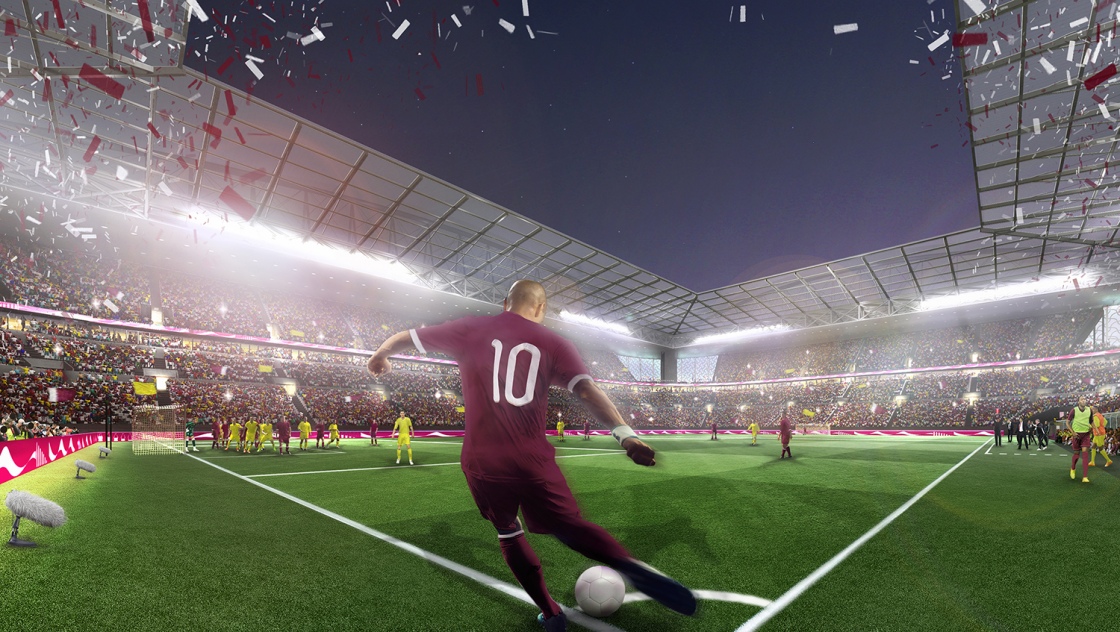
Sports Venue Business owner and CEO, Katie McIntyre, featured on Soccerex.com in September, reporting on the range of procurement opportunities that abound in Qatar for product, service and solution providers ahead of the countries hosting of the 2022 FIFA World Cup™.

With the 2018 FIFA World Cup™ in Russia less than 2 years away, most host stadia projects in the country are nearing completion, with the construction madness of the last 36 months beginning to ebb away. However, move across to the Emirati of Qatar, where the subsequent edition of the FIFA World Cup™ will be held, and it’s a scene of fervent activity; with construction works on many host stadia either in their infancy or, in some cases, not yet off the architect’s drawing boards!
What this means for those providing products, solutions or services to the sector, is that where they might have missed out on securing contracts for the 2018 event – or for the lucky ones, this offers a second bite at the cherry – opportunities are bountiful for the 2022 FIFA World Cup™ host stadia, venues and accompanying infrastructure.
According to the Supreme Committee for Delivery & Legacy (SC):
Qatar has reached a significant milestone in its socio-economic development. The country’s strategic roadmap, as outlined in the Qatar National Vision 2030, and its winning the right to host the 2022 FIFA World Cup™ provide Qatar with a chance to make amazing progress towards its long-term goals. Although many of the opportunities will be created by the public sector, Qatar’s rapid progress will be powered by individuals and businesses in both established and emerging private sector industries.
The SC was founded with a vision of delivering the infrastructure required to host an amazing 2022 FIFA World Cup™ that leaves a lasting legacy for Qatar, the region, Asia and the world. We know that preparing Qatar for 2022 is a team effort and we are committed to working with companies both large and small, locally and internationally. By fostering sustainable economic growth and assisting in Qatar’s transition to a knowledge-based economy, the SC and the businesses with which we partner are helping Qatar to become a model for responsible social, human, economic and environmental development.
Due to the unprecedented size of the SC’s FIFA World Cup™-related infrastructure build programme, a great number and variety of business opportunities will be created for the private sector.
Opportunities abound
Some of the procurement for the 2022 FIFA World Cup™ host stadia commenced this year, however, the vast majority will commence from 2017 onwards.
The varying opportunities include:
- Structural Steel: 84,000 tonnes – Procurement from 2016 to 2018
- Concrete: 880,000m³ – Procurement from 2016 to 2018
- Asphalt: 16,000m² – Procurement from 2016 to 2018
- Sand Cement Plaster: 420,000m² – Procurement from 2016 to 2018
- Stadium cooling systems & equipment: 8,500 fan coil units & 810-1,100 air handling units – Procurement in 2017 and 2018
- Elevators: 110 units – Procurement in 2017 and 2018
- Firefighting Systems & Fire Detection Systems – Procurement in 2017 and 2018
- Plumbing: 1.4 million metres of pipework – Procurement in 2017 and 2018
- Temporary & Permanent Generators: 1,500 units of various capacities (from 320 to 2250 kVA) – Procurement from 2017 and 2019 or 2020
- Electric Distribution Boards: 16,500 units – Procurement in 2017 and 2018
- Temporary & Permanent Sanitary Appliances: 9,760 water closets; 3,360 wash basins; 4,800 urinals; 160 shower trays – Procurement in 2017 and 2018
- Server Infrastructure: 250 units of varying capacities – Procurement in 2017 and 2018
- Wi-Fi Solutions: 12,000 units – Procurement in 2017 and 2018
- ICT Cabling: 2.3 million metres – Procurement in 2017 and 2018
- Video Displays (supply &/or rental): 1,300 units – Procurement in 2017 and 2018
- Broadcast Cabling: 3.2 million metres – Procurement in 2017 and 2018
- SCADA Systems (11kV Networks): 8 systems – Procurement from 2017 to 2019
- Building Management Systems (BMS): 16 units – Procurement in 2017 and 2018
- Seating Systems: 350,000 seats of varying types, including: spectator seats (generally made from metal, plastic or wood); camera operator seats; VIP seats – Procurement in 2017 and 2018
- Doors, Windows & Shutters: Various doors, roller shutters & windows – Procurement in 2017 and 2018
- Stadium Floodlight Systems: 5,700 high performance LEDs and associated control systems – Procurement in 2018 and 2020
- Other Exterior Lighting Systems: 70,000 units of various types (light fixtures, LEDs, wash lights) – Procurement in 2017 and 2018
- Interior Lighting Systems: 570,000 units – Procurement in 2017 and 2018
- Stadium & Training Site Pitches (natural & synthetic for football, handball, tennis, basketball and other sports): 2,500,000m² of stadium pitches; 410,000m² of training pitches – Procurement in 2018 and 2019
- Security Cameras (linked to the centralised CCTV/security control system): 16,000 units – Procurement in 2018
- Networked Video Storage: 90 units of 1PB each – Procurement in 2018
- Security Fencing: 50,000 units (1 metre each) – Procurement in 2018
- Hostile Vehicle Mitigation: 100 active barriers; 10,000 passive barriers (1 metre units) – Procurement in 2018
- Security Doors: 800 units – Procurement in 2018
- Access Control Systems & Intruder Detection Devices: 10,000 cards; 10,000 card readers; 10,000 intruder detection devices – Procurement in 2018
- Turnstiles: 1,550 units – Procurement in 2018
- Landscaping: Hard & Soft – Procurement in 2018 and 2019
The full list of procurement opportunities are available to view online at:
http://www.sc.qa/en/opportunities/procurement
All those wishing to tender, must first register by completing the SC’s supplier registration form, which is available online at: http://www.sc.qa/supplier/registration
The 2022 FIFA World Cup™ host stadia
Al Bayt: the new 60,000-capacity stadium will host matches right through to the semi-finals. After the tournament, the arena will reach even more people around the globe – in a remarkable way. Like a true nomad’s tent, it will be portable. The top tier of seating will be removed and given to developing nations that need stadium seating. This project is due for completion, fourth quarter 2018.
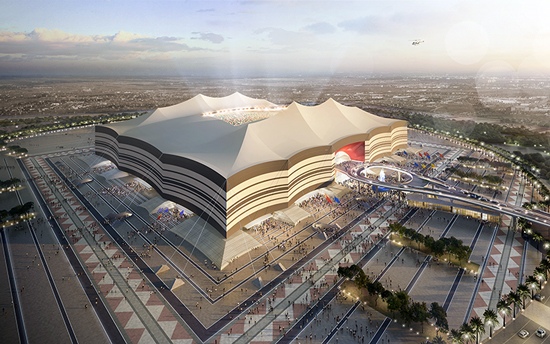
Al Rayyan: designed by Ramboll and Pattern, the stadium will become the new home ground for Al Rayyan Sports Club – a popular soccer team in the Emirati. It will host up to 40,000 fans at matches through to the quarter-finals. In its post tournament/legacy mode, almost half of the stadium’s modular seats will be removed and given to football development projects abroad. The smaller stadium will enable Al Rayyan to maintain the intimate, neighbourly character it is famous for. Main contractors include Bin Omran, Nakheel, Manco International and AECOM. The Indo-Qatari JV of Al Balagh Trading & Contracting and India’s biggest construction firm, Larsen & Toubro Limited (L&T), has teamed up with London-based architect KSS and Stuggart-based structural engineer Schlaich Bergermann & Partner for design execution. The venue is due for completion, first quarter 2019.
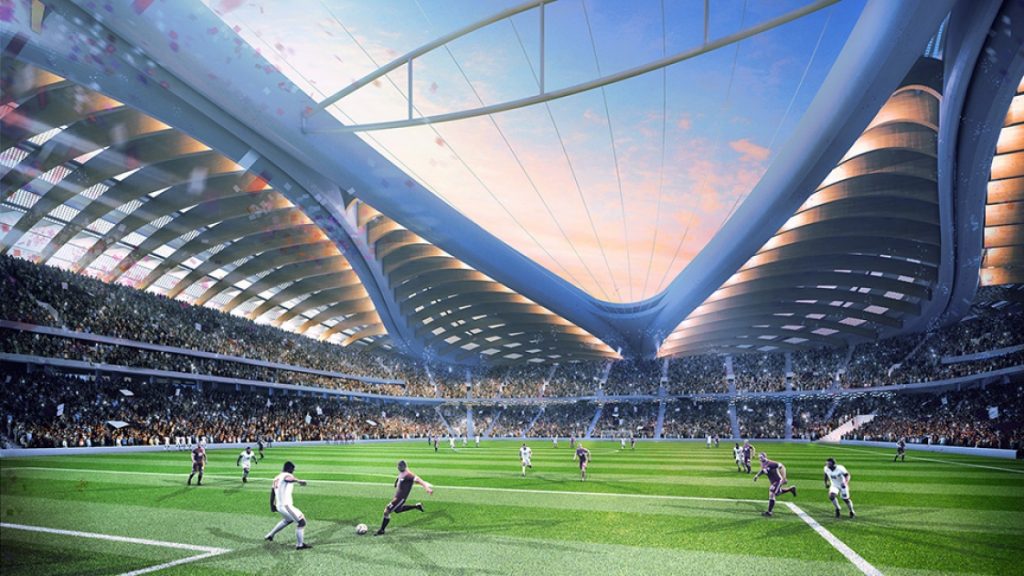
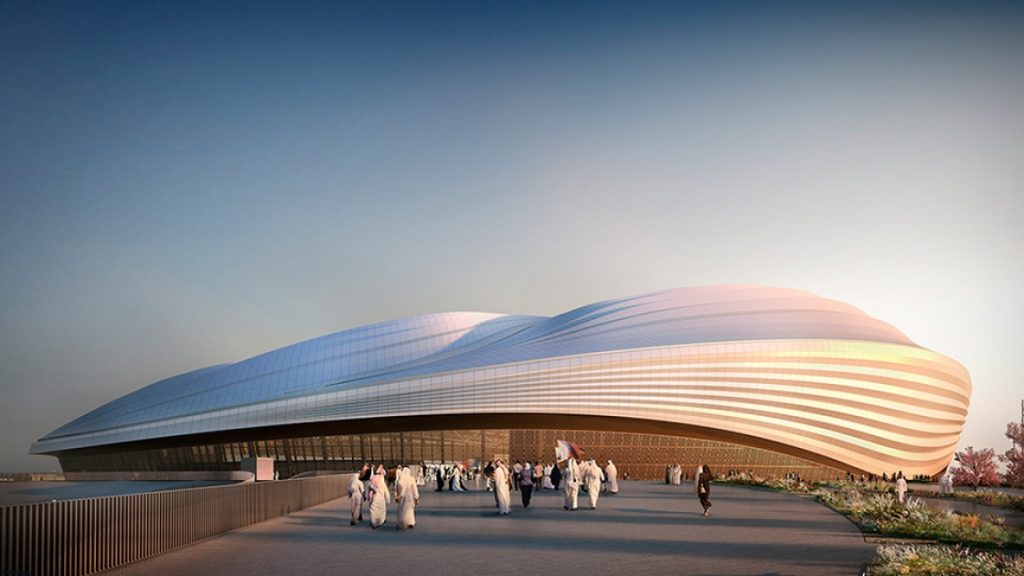
Al Wakrah: this 40,000-capacity boldly futuristic shaped arena – designed by Zaha Hadid Architecture (ZHA) – will host matches through to the quarter-finals. After the tournament, it will become the new home ground of local football team, Al Wakrah Sports Club, albeit with a reduced capacity of 20,000 guaranteeing an electric atmosphere for their Qatar Stars League (QSL) matches. The other 20,000 seats will be donated to football development projects overseas. The stadium is due for completion, fourth quarter 2018.
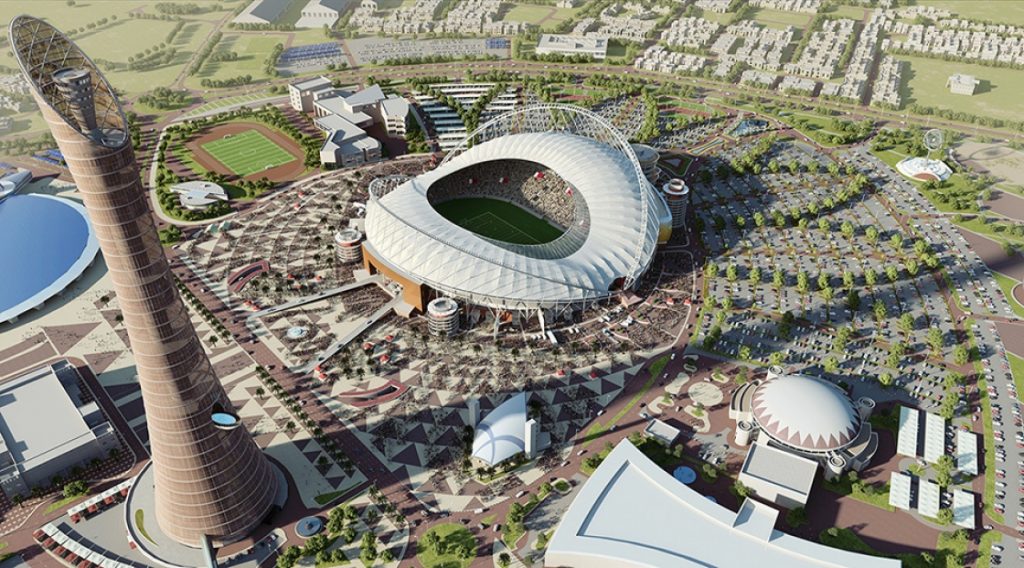
Khalifa International: this 40,000-seat arena already boasts an illustrious hosting history, having previously welcomed the Asian Games, the Gulf Cup and the AFC Asian Cup, among others. It is being redeveloped by Aspire Zone Foundation, one of the SC’s key stakeholders, ready to host matches through to quarter-final stages. It is due for completion during the fourth quarter of 2016.
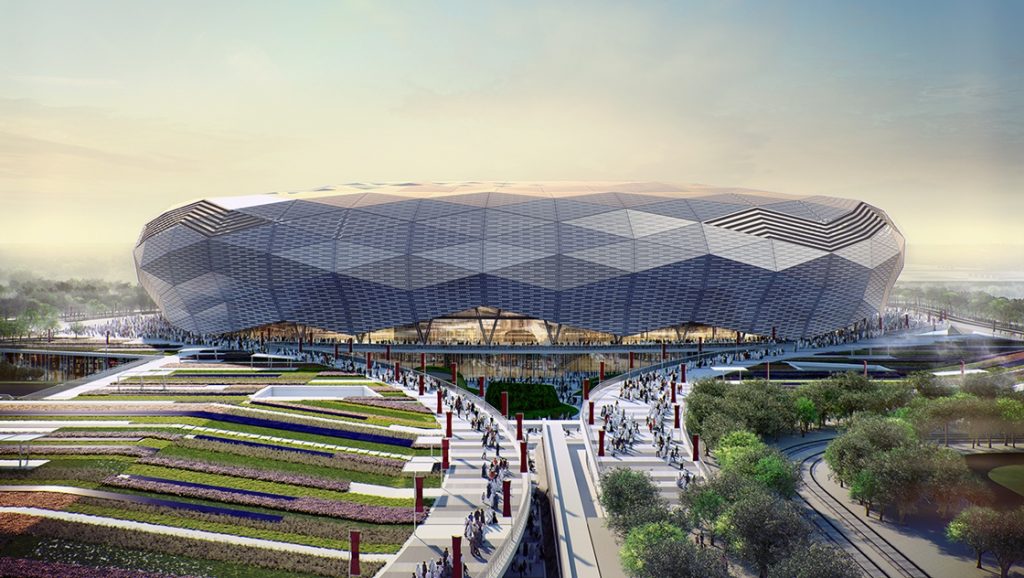
Qatar Foundation: Fenwick Iribarren Architects is the lead design consultant on this 40,000-seat stadium, which will sit at the heart of Education City; a vibrant centre of knowledge and innovation. Its most direct contribution to international development will come after it has hosted matches through to the quarter-finals, when the arena’s capacity will be reduced to 25,000, the rest of the 15,000 seats will be donated to stadiums in developing countries, helping cultivate a passion for the game around the globe. Astad Project Management is the project manager on the stadium, with Cyprus-based contractor, Joannou & Paraskevaides (J&P), leading the joint venture consortium of J&P Qatar WLL, Conspel Qatar WLL, J&P‐Avax S.A and J&P (Overseas) Ltd in the Main Contractor role. The project is due for completion, fourth quarter 2019.
Lusail Stadium: while the final design is still taking shape, Lusail Stadium is scheduled to host the Opening and Closing ceremonies, games throughout the tournament, and the main event itself – the 2022 FIFA World Cup™ final.
Ras Abu Aboud: the design of this arena has yet to be finalised, but it will hold at least 40,000 football fans and will feature – like all of the host stadiums – a natural grass pitch, hospitality areas, and stadium air conditioning. Global architecture firm Populous, which has designed some of the most famous sporting venues in the world, is working on proposals for the stadium. Legacy proposals include transforming the stadium site into a mixed-use urban neighbourhood, providing housing for Qatar’s rapidly expanding population.
Al Thumama: in Doha’s southern suburbs, in the area known as Al Thumama, there are four football pitches run by the Qatar Football Association. These will be transformed into a modern stadium holding at least 40,000 fans. The new arena will host games through to the quarter-finals. Like all host stadia, it will use advanced cooling technologies to maintain a comfortable temperature for players, fans and officials. In its post-tournament guise, there are plans to reduce the arena’s capacity to 20,000. While plans have yet to be finalised, community engagement representatives from the SC have already met with local residents to discuss what they would like the stadium’s long-term legacy to be.
This article can also be viewed online at: https://www.soccerex.com/insight/articles/2016/qatars-land-of-opportunity
The Soccerex Asian Forum 2016, will be held 5-6 December, at the Grand Hyatt Hotel in Doha, Qatar, and will provide the perfect platform for the football industry to connect with the region’s key stakeholders. For more information, visit the event homepage here.
Author’s credits: Katie McIntyre can be contacted via her UK mobile on +44 (0) 797 0712538 or via email at: katie@sportsvenuebusiness.com.
Images courtesy: Supreme Committee for Delivery & Legacy (SC)
#SportsVenueBusiness

